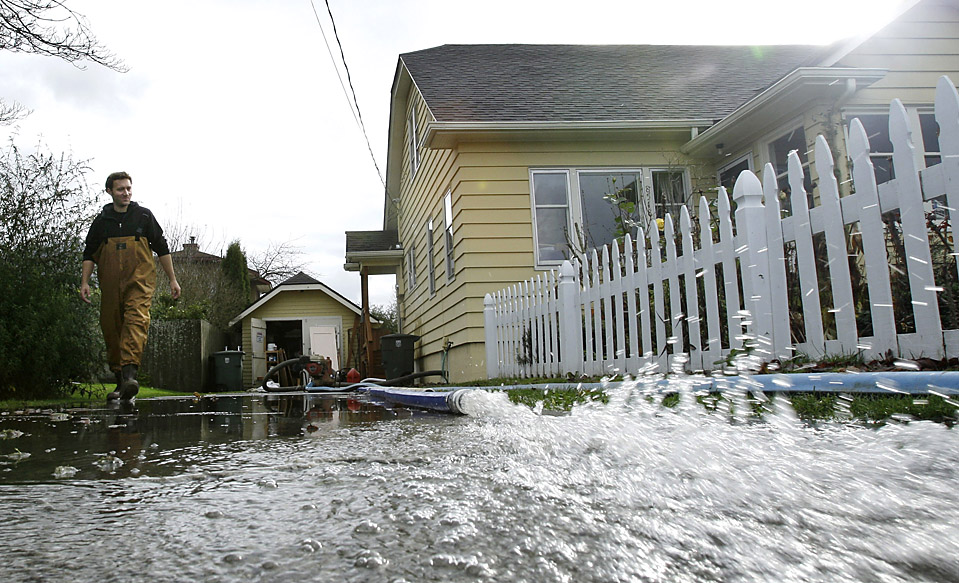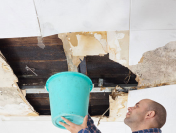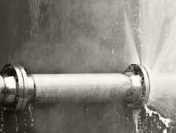A sump pump system is an effective solution to prevent a wet or flooded basement in many homes, but there are situations where a sump pump isn’t necessary. How do you know if you need a sump pump? If you do need a sump pump, which type is best and what will it cost? What other things can you do to protect your basement?
When You Need a Sump Pump
If your wet basement problem is the result of a high water table around your house or because your lot has poor drainage, you’ll need a sump pump. Homes built without an adequate basement waterproofing system may also benefit by a sump pump.
However, moisture and water leaks in the basement are often the result poor outdoor drainage. Before you invest in a sump pump system, check around your house to be sure that:
- gutters and downspouts are free of leaves and debris;
- Downspouts carry the water far enough away (4 to 5 feet is recommended) from the house to avoid back flow; and
- The soil around your foundation slopes at least a couple of feet away from the house.
Types of Sump Pumps
 If you do need a sump pump, here’s a quick overview before you shop. A sump pump is a small pump installed in the lowest part of a basement or crawlspace. Sump pumps are installed in specially constructed sump pits. Water enters the sump pit through drains or by natural water migration through the soil. The sump pumps job is to pump the water out of the pit and away from the building so the basement or crawlspace stays dry. There are two types of sump pumps used in homes:
If you do need a sump pump, here’s a quick overview before you shop. A sump pump is a small pump installed in the lowest part of a basement or crawlspace. Sump pumps are installed in specially constructed sump pits. Water enters the sump pit through drains or by natural water migration through the soil. The sump pumps job is to pump the water out of the pit and away from the building so the basement or crawlspace stays dry. There are two types of sump pumps used in homes:
Pedestal Sump Pump The motor on this type of pump is mounted on a shaft and positioned above your sump basin. Pedestal sump pumps are good for small basins (10 or less), as the pump base is submerged but the pump motor is not.
Submersible Sump Pump This type of pump has a sealed motor. The entire unit sits under the water in the sump basin. Because the motor is placed under the water, you will need a bigger pit. As long as there is enough room, submersible sump pumps are recommended for home installations because they are quieter and less obtrusive looking. They are also safer if there are children or pets in the house because the basin can be covered with a lid.
Choosing the Right Size
Sump pumps range in horsepower and the pumping capacity varies accordingly. Generally speaking, the higher the horsepower, the more gallons per hour it will pump. ABS Robusta sump pumps, for instance, come in ¼ HP and ½ HP and cost between $200 to $300.
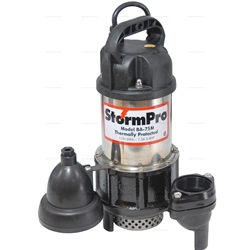 Average Homes ½ HP or “ HP sump pump is adequate for most homes. “ HP sump pump, like the high performance Ion StormPro WC33i by Metropolitan Industries, can pump 44 gallons of wastewater per minute at 10 levels. This pump runs around $220.
Average Homes ½ HP or “ HP sump pump is adequate for most homes. “ HP sump pump, like the high performance Ion StormPro WC33i by Metropolitan Industries, can pump 44 gallons of wastewater per minute at 10 levels. This pump runs around $220.
Homes Susceptible to Flooding If you live in an area with a high water table, flood plain or low lying area that is very susceptible to flooding, or if you have an installation with a high vertical lift (20 to 30 feet) and/or long horizontal run (150 to 250 feet), you may need a stronger ¾ HP pump like the Ion StormPro BA75i by Metropolitan Industries that provides 20 to 25% more pumping capacity over a ½ HP sump pump, or around 75 gallons per minute. This heavy duty pump is priced at about $500.
Save $ and Install it Yourself
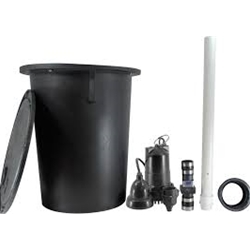 Installing a sump pump in your basement can be a DIY project if you are handy and have the right tools. There are even do-it-yourself sump kits that include everything you need to complete the job. Here are step-by-step directions on how to do it and the equipment you’ll need.
Installing a sump pump in your basement can be a DIY project if you are handy and have the right tools. There are even do-it-yourself sump kits that include everything you need to complete the job. Here are step-by-step directions on how to do it and the equipment you’ll need.
If you aren’t up for the task or if the construction or configuration of your basement makes installation a challenge, we suggest that you hire a plumber with sump pump experience or a basement waterproofing company. A contractor who specializes in pump installations is another option.
Other Ways to Prevent a Wet Basement
If you are one of the lucky homeowners who does not need a sump pump, here are a few easy ways to keep your basement dry and prevent dampness, mold and mildew:
- Clean leaves and debris from gutters
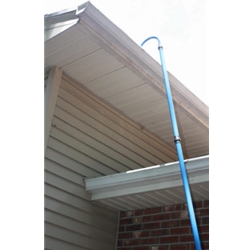 and downspouts to improve the flow of water and direct it away from the house and foundation;
and downspouts to improve the flow of water and direct it away from the house and foundation; - Inspect the exterior foundation and your basement’s walls and floors. Use epoxy to fill any foundation cracks and if warning signs are detected, apply masonry sealer indoors.
- Run a dehumidifier in the basement during days of high humidity;
- Have your sewer inspected or your septic tank cleaned to prevent backups during periods of prolonged, heavy rainfall;
- Install clear, acrylic window well covers if you have below-grade basement windows to keep out rain, leaves and pests.
More Sump Pump Advise
 As good as your sump pump system is in protecting your basement from flooding, remember that it won’t work if there’s a power outage or a mechanical failure. That’s why its a good idea to include a sump pump alarm in your system A sump pump alarm — such as the Floodfree — will sound a very loud audible alert that can be heard if you’re in the house. To receive a phone, email or text message notification when you’re away, choose a remote monitoring sump pump like the PumpAlarm Cellular Water Alarm.
As good as your sump pump system is in protecting your basement from flooding, remember that it won’t work if there’s a power outage or a mechanical failure. That’s why its a good idea to include a sump pump alarm in your system A sump pump alarm — such as the Floodfree — will sound a very loud audible alert that can be heard if you’re in the house. To receive a phone, email or text message notification when you’re away, choose a remote monitoring sump pump like the PumpAlarm Cellular Water Alarm.
Many sump pump failures are a result of power outages. If your home is not equipped with a whole house generator, add a battery-powered backup system so your sump pump will continue to pump water even if the power goes out.


